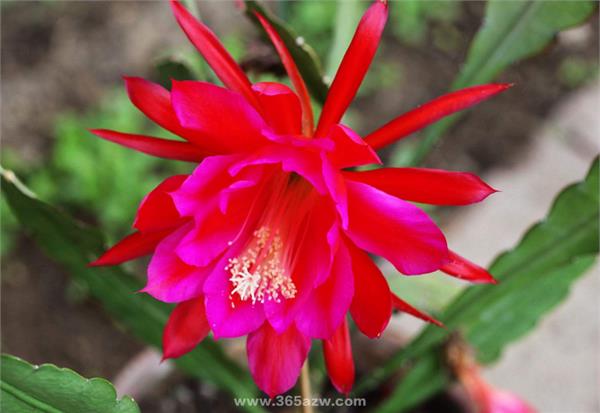A detailed introduction to the culture methods of Ling Arrow Lotus
The cultivation method of arrow lotus should stop fertilizing and control watering in winter, when the potted soil is moist and low temperature, which is most likely to cause rotten roots. let's take a look at the details of the culture methods of arrow lotus.

A detailed introduction to the culture methods of Ling Arrow Lotus
The Culture method of Ling Arrow Lotus
1. Soil: the lotus does not have a particularly high demand for soil, so you can use loose, fertile and well-drained sandy loam.
2. Watering: watering should be seen dry and wet during the growth and development of arrow lotus, and avoid stagnant water in the basin, otherwise it is easy to rot the root. Do not water too much when the bud is present but not open, otherwise it is easy to cause the flower to fall. In dry windy spring and hot summer, it is often necessary to spray abnormal stems with clear water and sprinkle water on the ground around flowerpots to maintain high air humidity, which is conducive to growth and flowering.
3, sunshine: make the arrow lotus like the warm and humid environment, but avoid direct sunlight, the summer weather is hot, the sun is strong, should be placed under the shade shed to avoid direct sunlight, and often spray water around the basin to improve air humidity. The cold weather in winter makes the arrow lotus not resistant to cold, so put it in a sunny place after entering the house.

4. Temperature: the arrow lotus is not cold-resistant. The northern area should enter the house before and after the cold dew festival and put it in a sunny place. From November to March of the following year, the temperature should be kept at 10-15 ℃. If the temperature is too high, the abnormal stem is easy to grow and affect the plant shape and symmetry; from March to June, the temperature should be kept at 13-18 ℃, and the temperature is too low, which affects the breeding method of arrow lotus and its matters needing attention.
5. Pruning: because the abnormal stem of arrow lotus is soft, it is necessary to use a thin bamboo pole as a pillar, it is best to tie it into an oval support, and tie the abnormal stem neatly and evenly on the support, which can not only prevent breaking, but also conducive to ventilation and light transmission, so as to make the plant shape symmetrical and beautiful.
6. Fertilization: make the arrow lotus like fertilizer, and apply mature thin cake fertilizer and water every 15-20 days in the growing season. After the Spring Festival, liquid fertilizer should be applied every 10 days, and too many lateral buds and branches sprouting from the base should be erased in time to reduce nutrient consumption and keep the plant shape neat and beautiful. Increase the application of available phosphate fertilizer for 1-2 times at the bud stage to promote the large and colorful flowers.
7. Insect pests: stem rot, brown spot and root-knot nematode damage often occur in Arrow lotus, which can be sprayed with 1000 times of carbendazim wettable powder, and root-knot nematodes can be irrigated with 1000 times liquid release solution of 80% dibromochloropropane EC. Poor ventilation, vulnerable to aphids, shell insects and red spiders, can be sprayed with 1000 times of fenitrothion EC.

Matters needing attention to make the arrow lotus
The main results are as follows: 1. Potted soil should be fully mature and rich in organic matter.
2, summer is the growing season, basin soil should be kept moist, do not accumulate water, so as to avoid rotting roots. Avoid strong light, can be cultivated in semi-shade, shelter from rain.
3. Topdressing rotten liquid fertilizer in autumn does not have enough nutrients, and it is not easy to blossom or blossom so that the cultivation methods and matters needing attention of Arrow lotus culture are less. Remove the shade in autumn to enhance the light.
4. Move indoors and water less in winter and put it in a place with light to control its growth. If the room temperature is too high in winter, dense new buds often sprout from the base, which should be removed at any time so as not to consume nutrients and affect flowering after spring.
5. Spring is the season for the growth of buds, so it is not appropriate to water and fertilize too much so as not to cause buds to fall. Spray some water on the branches in the evening.
Related
- Wuhan Hospital Iron Tree Blooming Result Was Instantly Frightened by the Gardener Master
- Which variety of camellia is the most fragrant and best? Which one do you like best?
- What is the small blue coat, the breeding methods and matters needing attention of the succulent plant
- Dormancy time and maintenance management of succulent plants during dormancy
- Minas succulent how to raise, Minas succulent plant pictures
- What are the varieties of winter succulent plants
- How to raise succulent plants in twelve rolls? let's take a look at some experience of breeding twelve rolls.
- Attention should be paid to water control for succulent plants during dormant period (winter and summer)
- Watering experience of twelve rolls of succulent plants
- Techniques for fertilizing succulent plants. An article will let you know how to fertilize succulent plants.



